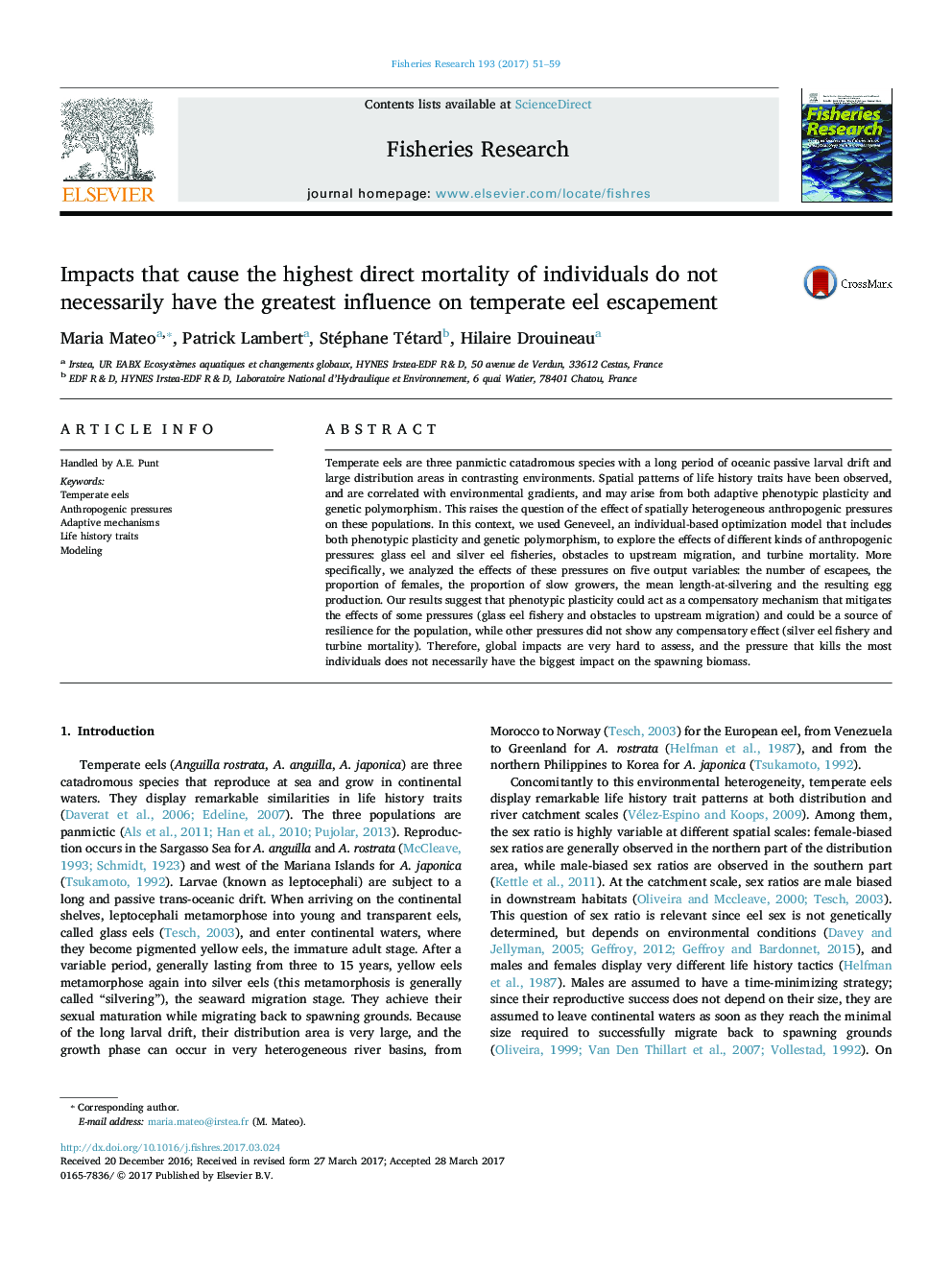| Article ID | Journal | Published Year | Pages | File Type |
|---|---|---|---|---|
| 5765475 | Fisheries Research | 2017 | 9 Pages |
Abstract
Temperate eels are three panmictic catadromous species with a long period of oceanic passive larval drift and large distribution areas in contrasting environments. Spatial patterns of life history traits have been observed, and are correlated with environmental gradients, and may arise from both adaptive phenotypic plasticity and genetic polymorphism. This raises the question of the effect of spatially heterogeneous anthropogenic pressures on these populations. In this context, we used Geneveel, an individual-based optimization model that includes both phenotypic plasticity and genetic polymorphism, to explore the effects of different kinds of anthropogenic pressures: glass eel and silver eel fisheries, obstacles to upstream migration, and turbine mortality. More specifically, we analyzed the effects of these pressures on five output variables: the number of escapees, the proportion of females, the proportion of slow growers, the mean length-at-silvering and the resulting egg production. Our results suggest that phenotypic plasticity could act as a compensatory mechanism that mitigates the effects of some pressures (glass eel fishery and obstacles to upstream migration) and could be a source of resilience for the population, while other pressures did not show any compensatory effect (silver eel fishery and turbine mortality). Therefore, global impacts are very hard to assess, and the pressure that kills the most individuals does not necessarily have the biggest impact on the spawning biomass.
Related Topics
Life Sciences
Agricultural and Biological Sciences
Aquatic Science
Authors
Maria Mateo, Patrick Lambert, Stéphane Tétard, Hilaire Drouineau,
